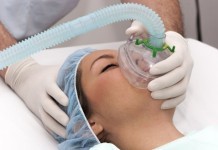WASHINGTON, DC – In what many practicing clinicians have called “not at all surprising” and “what dimwit funded this incredibly stupid idea?” the FAA has closed its outpatient surgical center that was touted as being a step forward in patient safety. The $100 million center combined state-of-the-art surgical approach with safety methods derived from 60 years of step-wise safety advances from the airline industry.
Hospital administrators have long paid the fees of safety consultants from the airline industry. Stanley Knowitall, a retired director of American Airlines’ Office of the Advancement of Safety, was among those who were surprised. “It seemed like a good idea. I would get paid double my annual salary to come to a hospital for a week and talk about the success of the airline industry and make doctors and nurses feel bad about themselves.”
Steven Stevenson, the CEO of Mercy Hospital, was similarly surprised. “After I got my MBA and started working in health care, doctors and nurses wouldn’t listen to me when I told them that they had to stop bad things from happening. Errors are really bad things. Stan Knowitall assured me that almost all errors are preventable. So I gave him money to tell the doctors that they had to stop errors.”
At the core of its system was a state-of-the-art checklist-based electronic medical record. Based upon the type of surgery and the patient profile, the system would choose from one of thousands of pre-formulated checklists. A validated algorithm would develop additional customized checklists based upon theoretical risks.
“The EMR was almost perfect,” said Knowitall. “It would occasionally crash for patients with more than 200 listed allergies or those who said they were intolerant to all pain medications, including Tylenol, but not Percocet.”
For some, checklists became part of the problem. “I don’t think we ever actually started a surgery,” said Dr. Richard Face, one of the clinic’s staff general surgeons specializing in inguinal hernia repairs. “We would almost always have to get chest X-rays preoperatively to make sure that the patient had lungs before intubation. The radiologist would suggest clinical correlation for a subtle opacity. This meant that we had to use another checklist that would inevitably make us treat for community-acquired pneumonia and atypicals with a macrolide, a cephalosporin, vancomycin, gentamicin, rifampin, INH, pyrazinamide, ethambutol, and acyclovir. Patients would then develop complications. We’d then have to start treatment for C. diff and many times, hemodialysis.”
Not all are calling the experiment a failure. “Take a look at the CPR records. After all of our patients would code, we would use an extensive CPR checklist to assure we were about to start CPR on the right patient,” says Knowitall. “We started CPR 100% of the time on the right patient. Generally within 20 minutes of the code being called.”







